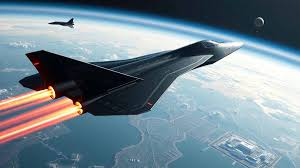Published: 07:53 AM, 01 October 2025
Hypersonic Horizon: Russia's Zircon Missile Tests Shake NATO and U.S. Security Calculus

Sangram Datta
On 15 September 2025, Reuters reported that Russia had flexed its military muscle with hypersonic missiles and strategic bombers during large-scale drills. The demonstration, part of the ongoing “Zapad 2025” joint military exercises with Belarus, has sent ripples through NATO capitals and Washington, raising serious questions about the evolving balance of power in Europe.
The centerpiece of Russia’s display was the Zircon hypersonic missile, successfully launched from the Admiral Golovko frigate in the Barents Sea. Capable of reaching speeds up to Mach 9 and striking targets at distances ranging from 400 to 1,000 kilometers, the Zircon poses a significant challenge to existing missile defense systems. Its operational deployment represents not only a technological breakthrough but a strategic shift toward rapid-strike capabilities that could potentially outpace NATO’s defensive measures.
Beyond missile tests, the exercises incorporated nuclear-capable missile drills and drone warfare simulations, heightening tensions amid reports of recent airspace violations into NATO territories, including Poland and Romania. In response, NATO has accelerated its military readiness, mobilizing air and naval forces along its eastern flank to counter potential threats.
While Moscow asserts that the drills are purely defensive, the international community remains cautious. The emergence of hypersonic technology like the Zircon challenges traditional concepts of deterrence and compels global powers to reassess defense strategies.
As Russia advances its hypersonic capabilities, the geopolitical landscape in Europe and beyond is entering uncharted territory. For NATO and the United States, the Zircon missile is more than a new weapon—it is a wake-up call, signaling the urgent need to adapt to a rapidly evolving era of high-speed warfare.




